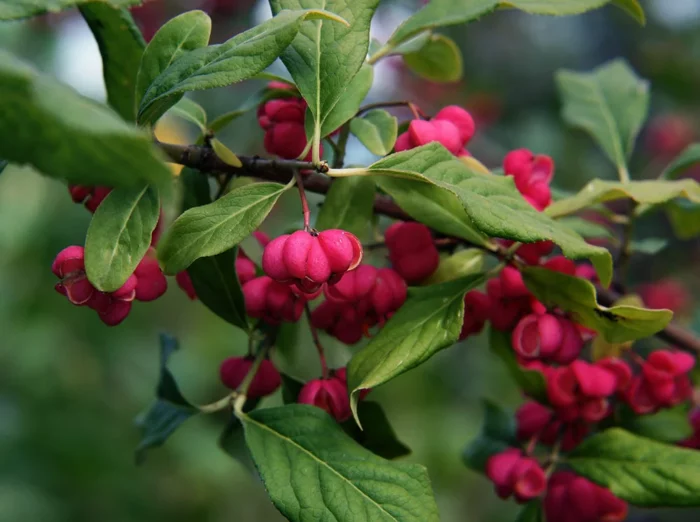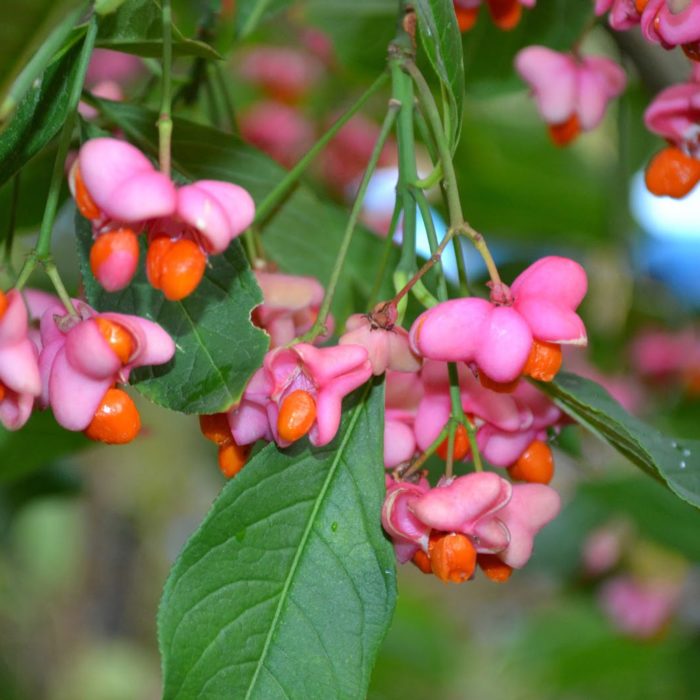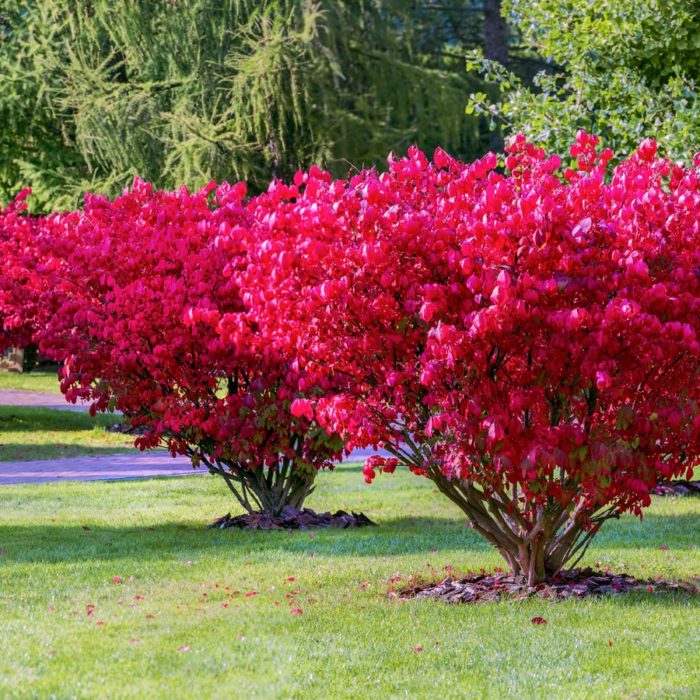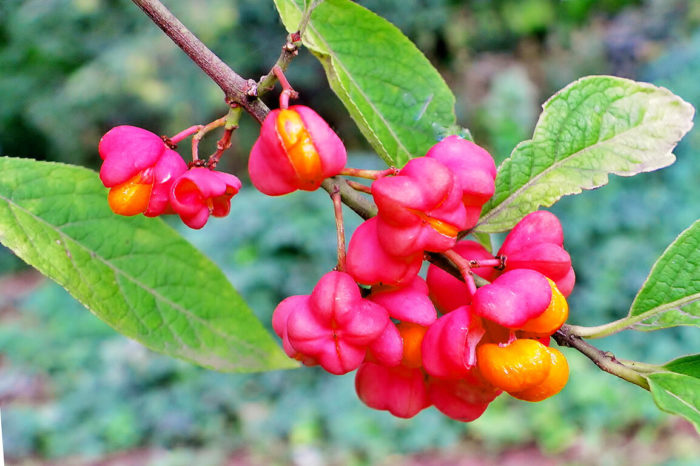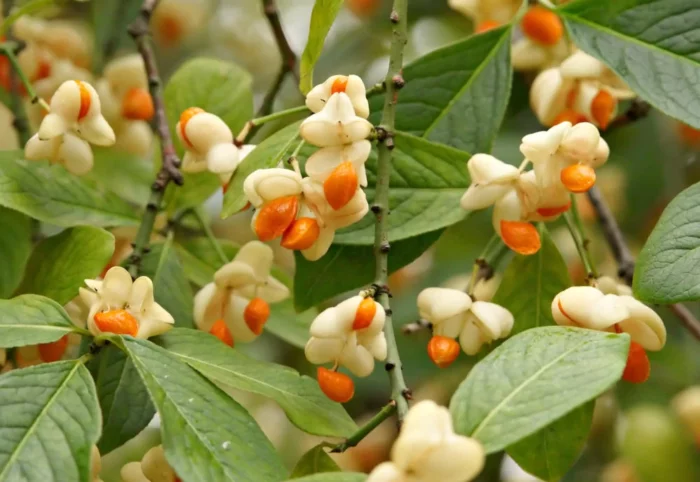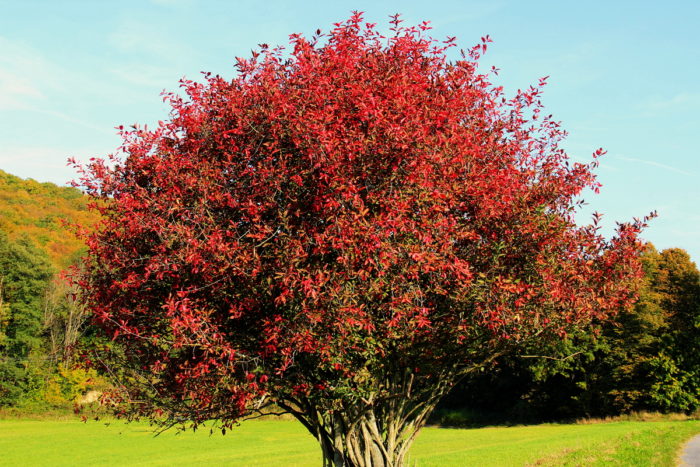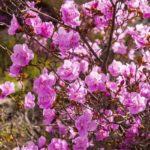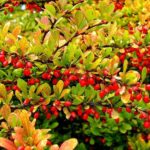In the design of summer cottages, ornamental shrubs are often used, which change the color of the leaves with the seasons. With them, the garden acquires a natural flavor and bright colors. In addition to its decorative properties, the merits of European euonymus include ease of care and medicinal properties. In landscape design, shrubs are given a place in hedges and group compositions with other deciduous plants.
Description of the plant
European euonymus is common in the nature of Eurasia, North America and Australia. In Russia, it grows in the European part, in the Crimea and the Caucasus.The shrub belongs to the Euonymus family, which has more than two hundred species.
Botanical characteristics of European euonymus:
| Name | Description |
| Plant type | Deciduous Shrub Tree |
| Height | 2-4 meters |
| Branches | The cross section is tetrahedral with rounded edges, round.
Direct Green, with a brown tint of edges in summer Gray in winter
|
| Leaves | Oval, teardrop-shaped, with petioles
Length 1.5-11.5 centimeters The edges are serrated
|
| Flowers | Small
Yellow-green Collected in inflorescences |
| Fetus | Seed pod
As it ripens, it changes color from green to bright pink. |
| Seeds | White
In an orange shell Four per box |
| Root system | Powerful
fibrous |
European euonymus wood has an unpleasant odor when cut and changes color from yellowish to white when exposed to air. The plant blooms in April-June. The seeds ripen from June to October.
Euonymus grows on the edges of pine, alder and oak forests. Sometimes the shrub is found in wetlands and on the banks of water bodies. The plant tolerates frost and drought well and is long-lived. In the Askania-Nova Nature Reserve there are euonymuses whose age exceeds 60 years.
Landing Features
The best time to plant euonymus is early spring and autumn. Large varieties can be planted directly into the ground. Shrubs grow in height and width and are a flexible material for creating geometric shapes using pruning.
European euonymus is grown in all ways: from seeds, cuttings, layering, root shoots and a divided bush. Ready seedlings are sold in nurseries. Usually these are three-year-old plants, ready to be transplanted to a permanent location. Mature bushes do not tolerate changing locations well. If the euonymus is more than seven years old, it cannot be replanted.
In autumn, the leaves of the bush turn red. It happens that they remain green. The color does not change because the conditions are not suitable for the plant. European euonymus is sensitive to the composition of the soil and needs light. Therefore, the place for ornamental shrubs must be chosen with special attention.
Selecting a location
Euonymus loves moderately moist, non-acidic soil. The place for the bush should be spacious, as it grows greatly.
Main requirements:
- good natural light so the leaves turn red in the fall;
- lack of groundwater, drainage;
- soil acidity at a neutral or weak level;
- protection from strong winds.
European euonymus is drought tolerant, so it can be planted in an open area in direct sun. The plant will also thrive in light partial shade.
Excess moisture causes the roots of the bush to rot. Surface groundwater will waterlog them. It is better to choose a place where there are no underground streams at all or where they lie deeper than 2.5 meters from the surface.
The soil for euonymus should be nutritious, but light and loose. The roots of the plant require an influx of oxygen. Before planting, it is necessary to check the acidity of the soil in the selected area and reduce it with the help of limestone admixture. If other plants previously lived there or the area as a whole is not particularly fertile, you need to apply organic and mineral fertilizers.
Landing algorithm
Preparing the site for European euonymus begins two weeks before planting. To enrich the soil with nutrients, it is dug up with the following mixture of fertilizers: 10 kilograms of humus, 80 grams of potassium and phosphorus per 1 square meter. Before planting, prepare a nutrient mixture from dug up soil and peat.
Procedure:
- dig a hole with a diameter and depth 1.5 times larger than the root system of the seedling;
- pour drainage from pebbles, crushed stone or broken bricks onto the bottom;
- mix the excavated soil with peat and sand in a ratio of 1 to 2 and to 1;
- to reduce the acidity level, add slaked lime to the mixture - 370 grams per 1 square meter;
- pour a third of the mixture into the planting hole on top of the drainage;
- remove the seedling from the container and install it in the hole without clearing the roots from the earthen clod;
- cover the plant with the remaining soil mixture, leaving the root collar 5 centimeters above ground level;
- compact the planting;
- water the seedlings, a bucket of water for each bush.
European euonymus is planted at intervals of 1.5-2 meters so that the plants have enough space to form a crown.
To make a hedge, instead of holes, dig a trench, also put drainage on the bottom and prepare a nutrient mixture.
Aftercare
Young euonymus seedlings require more attention than adult plants. In the first month, water the bush once a week and make sure that the soil does not dry out.
The roots of European euonymus are located at a depth of 1.5 meters. Water will reach them only with abundant watering. To prevent moisture from evaporating too quickly, the tree trunk circle is mulched with peat or sawdust.
The benefit of mulching also lies in the fact that the soil will not sag from moisture and will not become overgrown with weeds. The young euonymus does not need extra neighbors that take away food. It is important to loosen the soil after watering so that the plant roots can breathe.
The further development of the plant depends on simple rules of care - watering, fertilizing and pruning. When the bush blooms, it will need more nutrients. Flowering and fruiting of the European euonymus begins at the age of four years.The following year after planting, you can expect small flowers to appear in May-June.
An unpretentious plant will generally feel good without additional feeding. Fertilizers promote the bright color of its leaves.
Watering and fertilizing
When caring for euonymus, it is important to keep the soil moist, but not allow water to stagnate. Lack of moisture will affect the color of the leaves. In autumn they will not be bright red, but will only turn slightly red.
The water requirement for an adult euonymus is 40 liters per 1 square meter. A large volume of water is necessary so that even deep roots can drink.
Shrubs need to be watered not only in dry summers. If it is warm in the fall and there is little precipitation, the soil of the plant also needs to be moistened, and before the first frost, around the end of October, the planting must be watered abundantly. The moisture supply should be enough for the roots until spring.
In the first year, the euonymus seedling will need autumn feeding. From the fourth year of life, the plant is fertilized three times a year:
- in the spring, when flower buds appear, add manure or bird droppings to the soil - dilute with water for irrigation in a ratio of 1 to 10 for manure and 1 to 20 for droppings;
- In summer, during the period of active flowering, also feed with water for irrigation with a phosphorus-potassium mixture;
- at the end of summer, beginning of autumn, when the fruits begin to form, also add phosphorus and potassium.
The soil of European euonymus must be loosened after watering, and fertilizers must be applied before it. This way the fertilizing will reach the smallest roots.
Trimming
With sufficient nutrition and moisture, the shrub quickly grows in height and width. Over the course of a year, euonymus branches add 25 centimeters. In the second year after planting, the plant will need pruning to properly form the crown. It is carried out in the spring before the kidneys awaken.Throughout the year, they also monitor the growth of shoots and remove branches that have grown to the sides.
Mature shrubs are trimmed three times a year:
- in the spring - remove branches damaged during the winter;
- in summer - pinch shoots and thin out the crown to maintain shape;
- in the fall - when the plant has finished bearing fruit, the crown is adjusted again.
Spring pruning stimulates shoot growth. In summer, euonymus is trimmed after flowering. The shrub lends itself well to curly pruning. It makes balls, ellipses, cones, or hedges that are perfectly even on top. Tall specimens are given a standard shape.
To grow a figured euonymus, you can use a frame of the desired shape. For example, install a ball of wire around the seedling and trim off the branches sticking out to the sides.
Preparing for winter
Seedlings of ornamental shrubs must be covered in the first three years after planting. After the last watering of the current year, the soil in the tree trunk circle is covered with a thicker layer of mulch. Euonymus branches are secured with twine. The top of the bush is wrapped in burlap, agrofibre, and covered with spruce branches.
Mature plants theoretically survive at temperatures of -28 degrees without shelter. If the thermometer drops lower and there is a lot of precipitation, it is better to wrap small bushes. Branches may break under a thick layer of snow.
Tall tree-like shrubs more than two meters high will be difficult to protect from the elements. For them and for plantings in the southern regions, mulching will remain a useful practice. The coating protects the soil from freezing.
After a frosty and wet winter, it happens that the leaves of the plant turn reddish in the spring. This is a sign that the soil at depth has not thawed. The roots do not receive enough nutrition or are damaged.Therefore, for the winter, the tree trunk circle should be covered with dry leaves, peat or sawdust.
Application
European euonymus in landscape design often plays the role of the center of the composition due to its bright color. When other plants have flowered and dropped their leaves, the shrub revives the garden preparing for winter hibernation.
In addition to hedges, euonymus is used to designate zones and alleys. It is planted next to an alpine hill. The shrub goes well with decorative stones.
The plant has medicinal properties. In folk medicine, the shoots and fruits of the bush are used to prepare decoctions.
All parts of euonymus contain a toxic substance, which, when consumed in small doses, has a laxative and choleretic effect.
Spindles, knitting needles, and keys of musical instruments are made from euonymus wood. It is used as a material for artistic carving.
In France, charcoal for drawing and pencils for shading are obtained from the wood of the bush. European euonymus is also a source of a rubber-like substance called gutta-percha. It is extracted from the bark of plant roots and used in the chemical industry.
Tips for gardeners
Euonymus is considered a magnet plant for garden insect pests. This property is favorable for other crops, but this way you can lose a beautiful shrub. European euonymus harbors aphids, spider mites, caterpillars, and mealybugs. The most common fungal disease is powdery mildew. Untrimmed plants that lack light suffer from mold and insects.
Recommendations for growing euonymus:
- carry out preventive treatment with insecticides and fungicides in spring and autumn;
- monitor soil moisture - when there is too much water, green leaves fall off, and when there is not enough water they dry out;
- observe intervals when planting seedlings to prevent plant diseases;
- The easiest way to propagate euonymus is by cuttings and layering;
- the bush is self-pollinating, but to obtain seeds it is better to plant several plants nearby;
- To prevent acidity in the soil from increasing, add wood ash or dolomite flour.
European euonymus is planted next to ornamental cereals, green boxwood, and Thunberg barberry. The proximity to coniferous trees is controversial. They have a more powerful root system, and fallen needles increase the acidity of the soil. You should not plant plants that are prone to fungal diseases, such as gooseberries and black currants, next to the euonymus.

